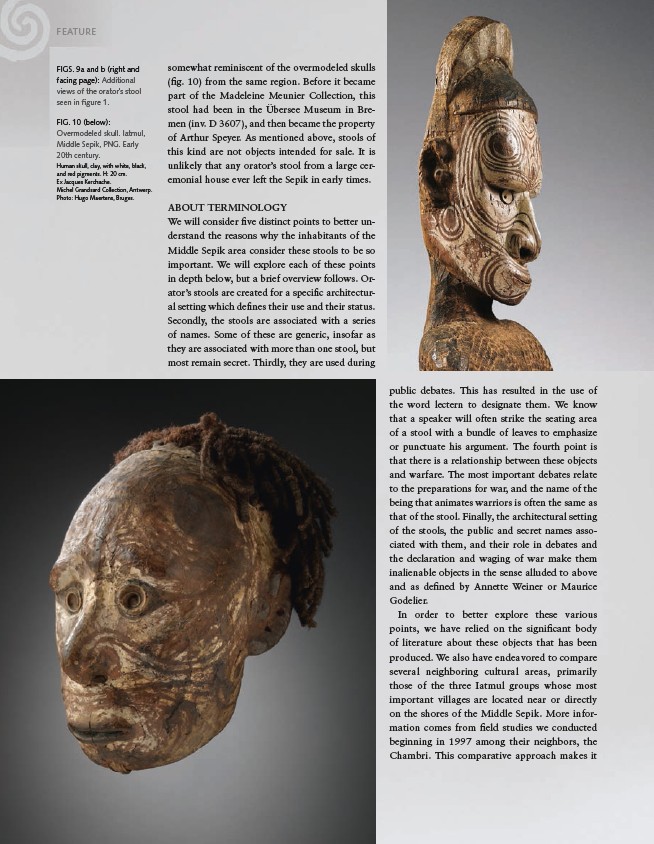
FEATURE
FIGS. 9a and b (right and
facing page): Additional
views of the orator’s stool
seen in fi gure 1.
FIG. 10 (below):
Overmodeled skull. Iatmul,
Middle Sepik, PNG. Early
20th century.
Human skull, clay, with white, black,
and red pigments. H: 20 cm.
Ex Jacques Kerchache.
Michel Grandsard Collection, Antwerp.
Photo: Hugo Maertens, Bruges.
102
somewhat reminiscent of the overmodeled skulls
(fi g. 10) from the same region. Before it became
part of the Madeleine Meunier Collection, this
stool had been in the Übersee Museum in Bremen
(inv. D 3607), and then became the property
of Arthur Speyer. As mentioned above, stools of
this kind are not objects intended for sale. It is
unlikely that any orator’s stool from a large ceremonial
house ever left the Sepik in early times.
ABOUT TERMINOLOGY
We will consider fi ve distinct points to better understand
the reasons why the inhabitants of the
Middle Sepik area consider these stools to be so
important. We will explore each of these points
in depth below, but a brief overview follows. Orator’s
stools are created for a specifi c architectural
setting which defi nes their use and their status.
Secondly, the stools are associated with a series
of names. Some of these are generic, insofar as
they are associated with more than one stool, but
most remain secret. Thirdly, they are used during
public debates. This has resulted in the use of
the word lectern to designate them. We know
that a speaker will often strike the seating area
of a stool with a bundle of leaves to emphasize
or punctuate his argument. The fourth point is
that there is a relationship between these objects
and warfare. The most important debates relate
to the preparations for war, and the name of the
being that animates warriors is often the same as
that of the stool. Finally, the architectural setting
of the stools, the public and secret names associated
with them, and their role in debates and
the declaration and waging of war make them
inalienable objects in the sense alluded to above
and as defi ned by Annette Weiner or Maurice
Godelier.
In order to better explore these various
points, we have relied on the signifi cant body
of literature about these objects that has been
produced. We also have endeavored to compare
several neighboring cultural areas, primarily
those of the three Iatmul groups whose most
important villages are located near or directly
on the shores of the Middle Sepik. More information
comes from fi eld studies we conducted
beginning in 1997 among their neighbors, the
Chambri. This comparative approach makes it